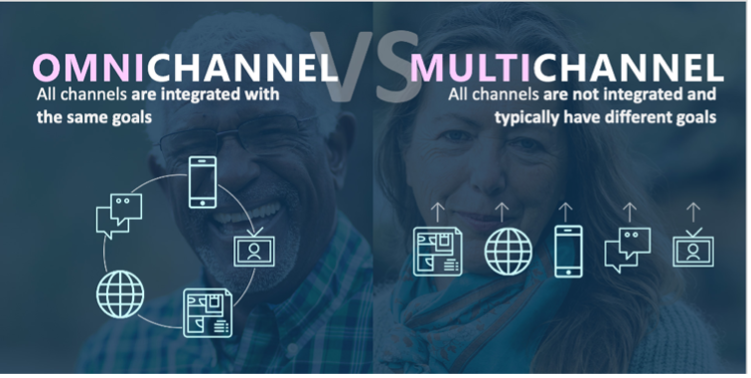Take Advantage Of Omnichannel Marketing In 5 Easy Steps
Justin Stauffer Creative That Sells, DRTV, Digital Direct Marketing, Direct Mail, Email Marketing, Response MarketingWatch this FREE DMW webinar and start putting omnichannel power behind your brand.
Editor’s Note: This post is adapted from the 2023 RISE Medicare Marketing & Sales Summit (MMS) in which DMW’s VP of Integrated Marketing was a featured co-speaker. For the full presentation, watch the free webinar.
Today’s consumers get inundated with advertising everywhere they turn — in and outside the home. Which means it’s even more important to reach your target audiences with consistent brand messaging that drives tangible business value — more awareness, more leads, and more sales.
Regardless of how consumers interact with your brand — TV, mail, smartphone or laptop, mall kiosk, retail store, radio, and more — it’s imperative that their consumer experience be seamless, and rewarding.
You need a clear strategy for how all your traditional media tactics and digital tactics work together — with a consistent voice and goal. Say hello to: Omnichannel Marketing.

With omnichannel, messaging and media are all in unison. With multichannel, there are different channels with different goals.
How to distinguish Omnichannel from Multichannel — and why it matters.
The premise of omnichannel marketing routinely gets mixed up with multichannel marketing, as if the two terms were simply a matter of semantics. But the true meanings are quite different.
Omnichannel marketing is focused on getting a consistent brand message and customer experience across every media channel that your audience uses.

So whether a prospect dials your health plan’s call center, visits your website, scrolls through your newsfeed, receives a direct mail piece, or watches a TV spot, your brand messaging and marketing goals will all work in unison.
Multichannel, on the other hand, is a marketing approach that does employ a 360-degree media reach, but every media channel may still have its own goal or messaging. While it can help build brand awareness and drive response, our clients find multichannel is typically less effective from a cost and lead perspective.
Now let’s take the first step to providing a consistent consumer experience …
Over the years, consumers have gotten smarter and more demanding — they want fully integrated experiences, whether interacting with brands online or offline. And you can deliver that across all channels by following these best practices:
 Step 1: Engage your audience within the channels they are using most.
Step 1: Engage your audience within the channels they are using most.
It’s tempting for marketers adopting this approach to think their media mix should include every channel. After all, “omnichannel” implies “all channels.” However, it’s not necessary; and is not the key to a successful omnichannel approach. The key is providing a consistent experience within all the channels you select to reach your audience more readily.
Let’s compare audiences and channels and see what works:
Say you’re trying to build up your Snapchat user base: How would you explain its usefulness to a senior audience age 65+? Disappearing messages? Streaks with your friends? Augmented reality photo filters? But the bigger question is why bother? Most seniors don’t use Snapchat.
Or maybe you’re with Microsoft and trying to promote more Outlook use: How would you try to convince a teenager why they should check their email daily? Or why they need to use proper grammar and punctuation? Again, why bother? People under age 20 don’t typically use email to communicate.

Would you try to sell seniors on Snapchat? Would you attempt to convince teens that email is cool? Likely not. They’re not the typical targets — because they don’t use the channels.
In both examples, because these media channels are not used by a particular audience, they don’t care about them. And that’s okay … for them: It is not okay for YOU if you’re spending money in every channel, including ineffective ones.
Carefully planning your omnichannel campaign allows you to spend time (and budget) focusing on effectively communicating in the channels where your audience spends their time.
Ultimately this saves both time and money — resources that could be allocated for additional marketing efforts.
So how do you know which marketing channels to use?
Watch DMW’s Free Omnichannel Webinar for these answers and a whole lot more!
85% of consumers begin their path to purchase using multiple devices. A consistent message across every channel is a must!
Thinking about your next direct response marketing campaign?
Talk with DMW. We’re a proven partner who can help you strategize, plan, and execute in all the right channels to reach your target audiences. And get results!